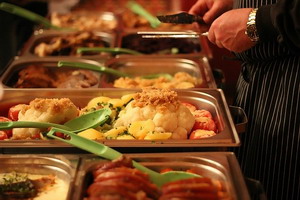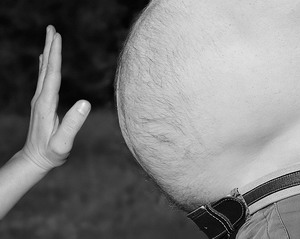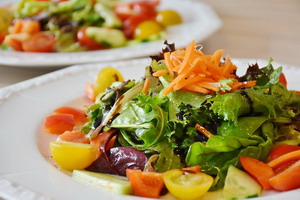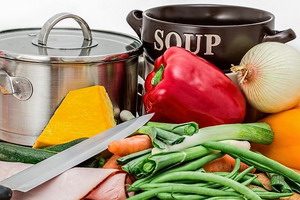
My New Year is starting a little late this year. I went on vacation last week to Orlando and had a great time at Disney Hollywood, Epcot, Universal, and NASA. Our timing was perfect for the weather (mid 70’s with light fluffy clouds), but even more perfect for our NASA day excursion. Space X was scheduled to launch their final test rocket launch to get approval for sending manned flights into space at exactly the time we were there to visit. I got to replay all those early mornings as a child watching all the first rocket launches of the US space program on our tiny black and white TV, except this time I was really there, in full color with mega surround sound. It was awesome! See it here!
So what does this have to do with New Years? Traditionally this is when I climb back on the health bandwagon. I go through the kitchen and throw out all the high carb foods and dairy containing foods that the holiday season brought into the house. I choose to go off my keto lifestyle for the holidays. I still stay gluten-free, but other carby sugary foods, as well as dairy containing foods, make their way into the diet for a couple months. The net result is gaining about 15 pounds every year around this time. At least half of that is just inflammation holding excess water on me, but the other half is just plain eating too much stuff because the hunger mechanisms are kicked up in me when my brain is running on sugar for their energy source instead of ketones. Because of the vacation, I am just now beginning my healthy eating lifestyle.

The essence of healthy eating is, unfortunately, vegetables. And by vegetables, I am not talking about corn on the cob or potatoes or green peas. No, I am talking about non-starchy vegetables like cabbage, broccoli, leafy greens, and the like. You know, all those vegetable you refused to eat as a child. Well to tell you the truth, my taste buds still think the same thing about those vegetables that they did when I was ten, except avocados. I hated avocados when I was little, but think they are delicious now.
The foods this culture (and many other cultures) like the best are the starchy, sugary, high vegetable fat foods. We are genetically programmed to like these foods specifically because they cause us to gain weight. Carrying extra weight was about the greatest survival advantage you could have throughout most of human history. Historically food availability was intermittent. Any time there was an abundance for some brief time, your ability to eat this food and store it as fat on your body when it was available was much more efficient than trying to store the food for later. Food spoilage, theft, pests, transportation, and other issues made food preservation very challenging. The best, most concentrated, most transportable, and safest food source was in the form of body fat.

But in these modern times of constant food abundance, this genetic programming works against us. Very quickly our amazing ability to store food as fat for later becomes a whole host of disease problems. You see, the fat formation and storage process is an inflammatory process. Every fat cell, once it gets full, becomes a little factory constantly spewing out inflammatory chemicals called cytokines. These cytokines travel throughout the body causing damage and pain. In small amounts, they are balanced by anti-inflammatory chemicals and cytokines. This balance is a vital part of health in our body as we need certain levels of inflammation to stimulate healing after an injury and to fight bacteria. But too much inflammation and we are in trouble.

So where does that leave us? Simply put, after a holiday season of putting on extra fat, we need to burn up that fat and get the body back into balance. That means no longer eating those fat forming foods, and switching to foods that the body has a hard time converting into fat, meaning low carb vegetables. Historically this cycle happened naturally around this time of year. We would put on extra weight after the harvest season in the late summer and early fall – the time of abundance. Once winter fully hit, food stores would be depleted and the time of hunger happened. We could still gather greens, and we might get lucky and catch some game, but that is about it ( at least in northern climates – my genetic stock). The cycles of nature created a time of keto dieting and fasting. This would last until the winter was over and spring was well enough along that the first crops started coming in. In some areas, this might be 6 to 8 months of keto dieting and fasting. Starchy foods like grains, legumes, and root vegetables take time to ripen before we can harvest them. The take away from all this is that the normal diet we as humans have evolved to eat this time of year in northern latitudes is keto dieting and fasting. So that is what I do.

If your genes are derived from ancestors that lived in equatorial regions where food is available year-round, then this approach to eating is probably not for you. You can tell who has these types of genes, as they don’t tend to get fat when they eat carbs and sugars. Their body simply ramps up their metabolic rate and burns extra calories off as heat production rather than store the excess as fat. They are better adapted to an environment of food abundance. However, even these people are getting fat these days because of hormone-disrupting and inflammation producing chemicals in our food supply. These chemicals are messing up the delicate control and balance mechanisms in our bodies.
But for those of us with the genes adapted for cold weather cycle survival, now is the time for vegetables, vegetables, and more vegetables. Add a little fat and protein to simulate catching game animals or fish and our programming can bring us back into balance. This is the time of the 4 S’s. What are the 4 S’s – Salads, Soups, Saute, and Steam – four ways to prepare vegetables. Yes, some people like the massage therapist at our office love colorful raw vegetables, the kind that really tastes like what our ten-year-old palate rejected. But the rest of us want (need) to do something with these suckers to make them taste better.

Salads are obvious these days and can be made in such a delightful assortment of tasty ways. The stores have nice mixes already made up for us. The trick to make them healthy is to toss the salad dressing they provide and make your own without the evil polyunsaturated seed oils in them. Make your own from avocado oil or extra virgin olive oil as these are non-inflammatory.

Soups are also easier these days. I like to start with a base of bone broth, which I used to have to make myself – a tedious process. Now you can actually buy excellent bone broths in your average grocery store. Just chop up a ton of different non-starchy vegetables and leafy greens and toss it into a big pot of bone broth. Add some herbs and spices and let it simmer. You’ll have soup in no time. Sometimes I like to add konjac zero carb noodles or Julianned jicama to the soup for different textures.

Saute is the lower temperature way to stir-fry vegetables, which means it will retain more nutrients and not oxidize the cooking oils. Oxidized oils are very toxic to the body and need to be avoided at all costs. Sorry, that means all deep-fried foods are out unless you deep fry in coconut oil like they used to do back in the ’50s (and still do most everywhere else in the world.)

Steaming is the fourth S in veggie preparation. It also is good for preserving the nutrients in the food. Boiling vegetables literally dissolves away the vitamins and phytonutrients in the food. Fresh food is really helpful here as well, as nutrients get destroyed quickly just with time once the vegetable is picked. Typically 30% of the nutrition is lost from a plant within three days of being picked. Steamed vegetables are also nice to add to salads to give them a different texture.
This describes what my diet will look like for the next several months. I include various protein foods intermittently, but not every day until my weight is back to balance. Once that is achieved then protein will be more of a daily fare. At this point, I will also add a piece of fruit each day. This cycle of eating will fairly closely match the genes from my ancestors, which really helps to optimize my health.
Take care,
David
